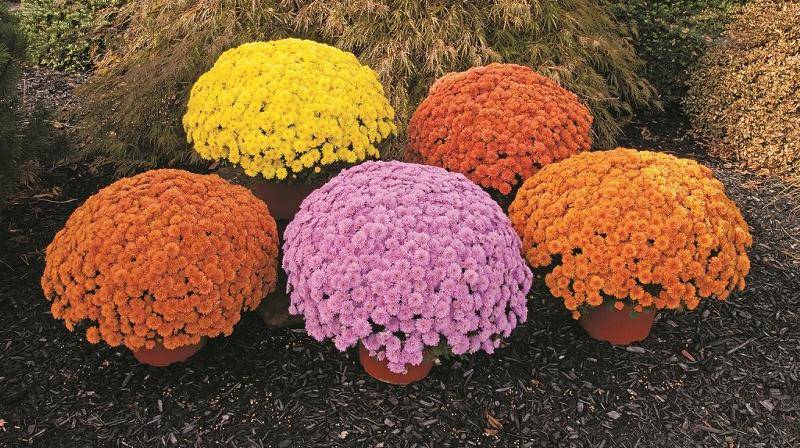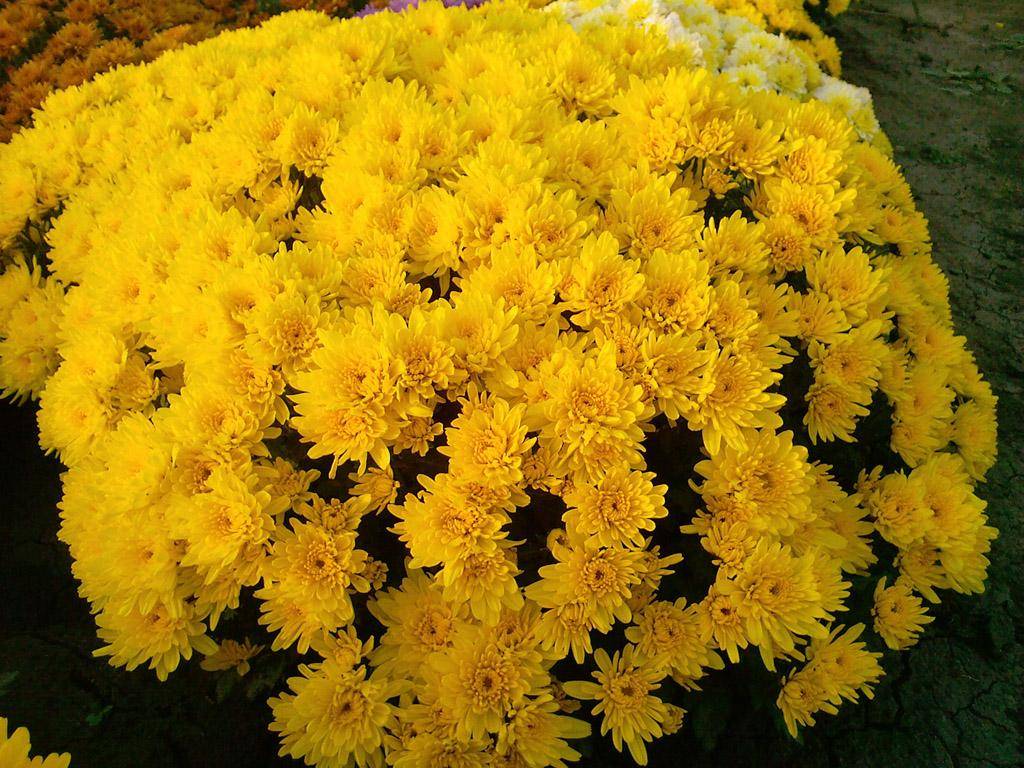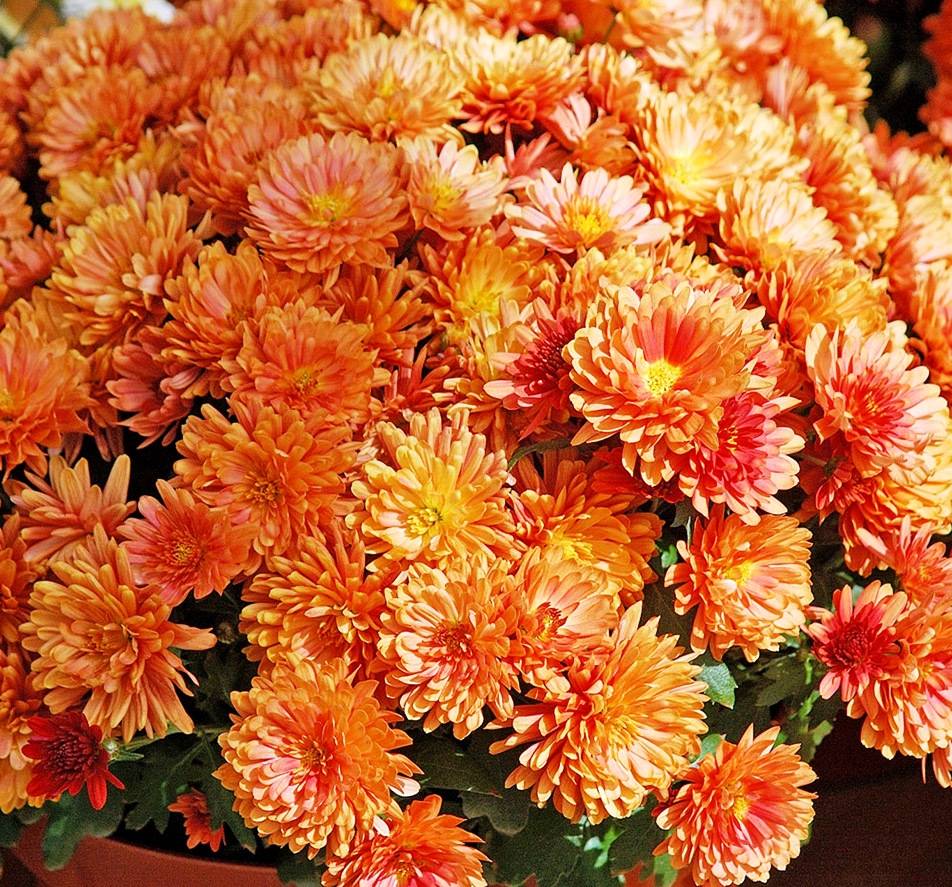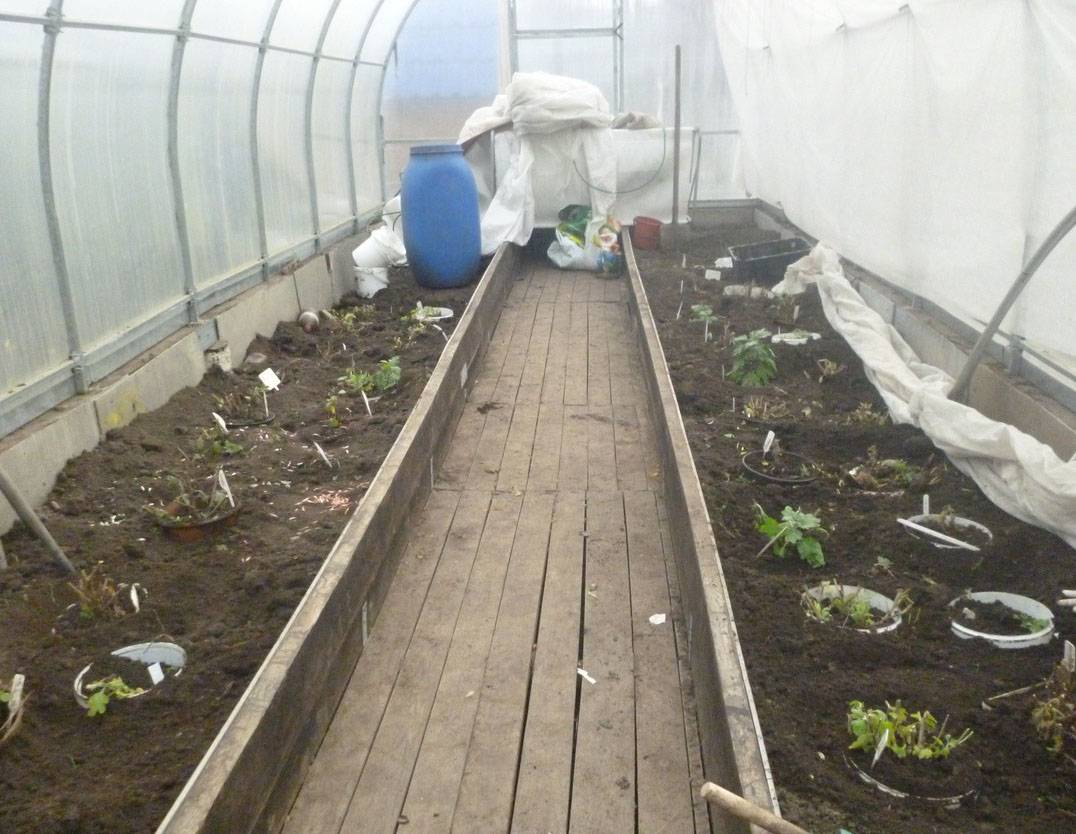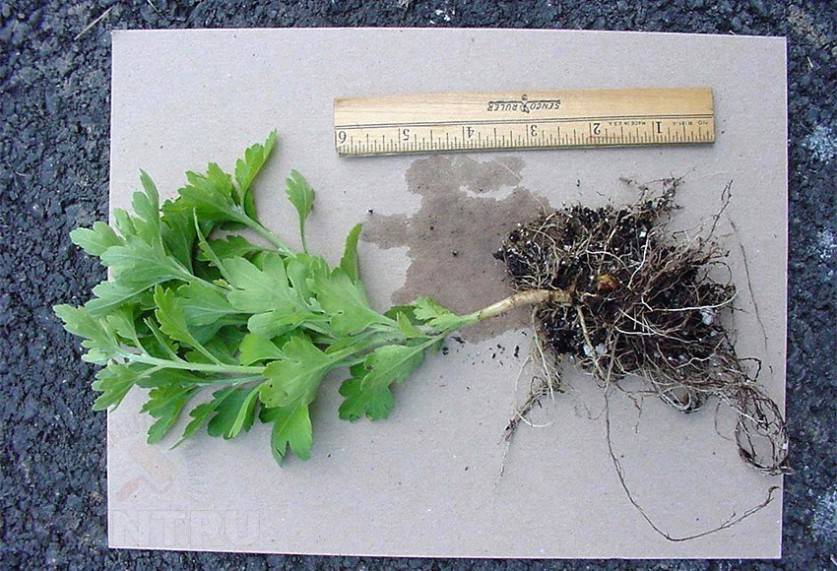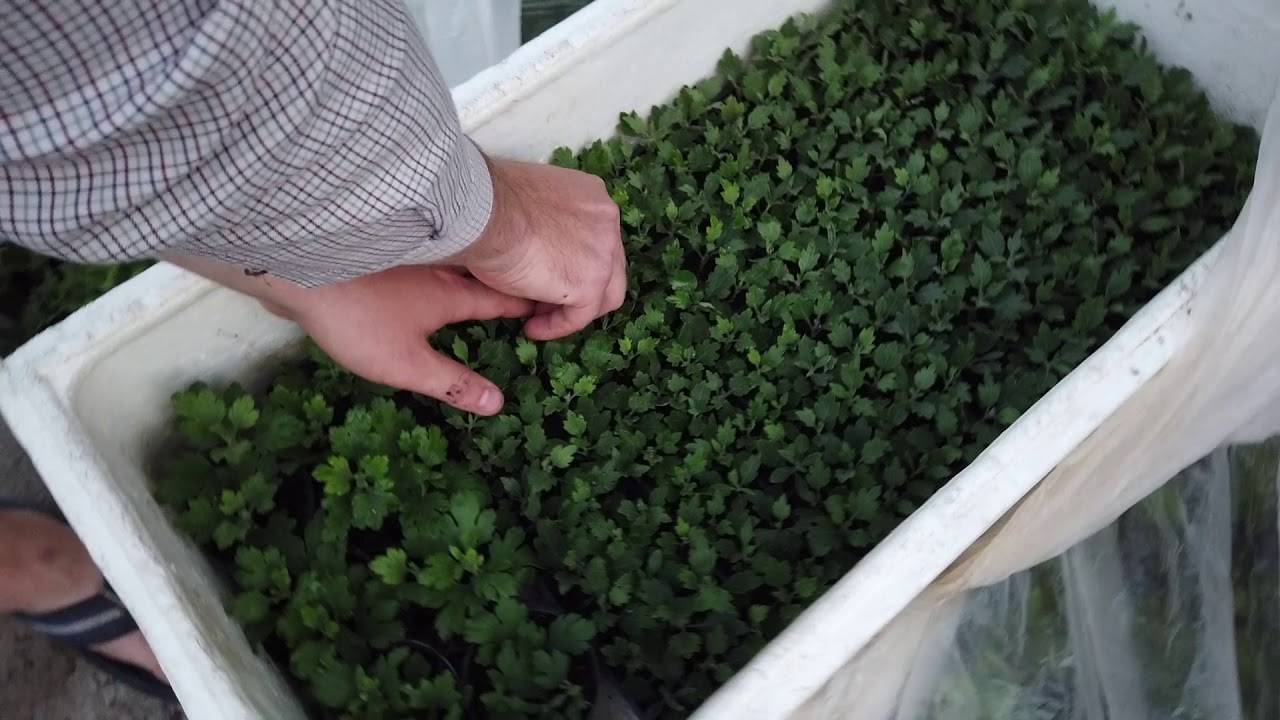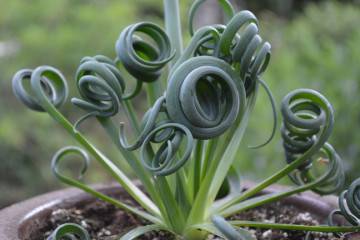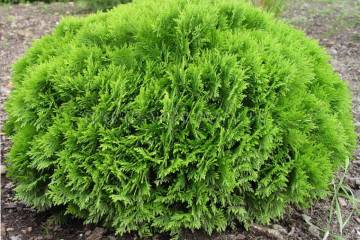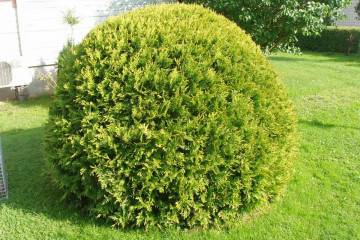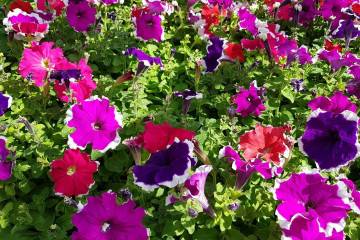Chrysanthemum multiflora (spherical) - growing and reproduction
Content:
- Chrysanthemum multiflora - what is this variety
- Popular varieties of multiflora, what they look like
- Chrysanthemum multiflora: planting in the open field
- How to care for a flower
- Preparing chrysanthemum multiflora for wintering
- Features of flowering plants
- Flower reproduction methods
- Growing problems, diseases and pests
Globular chrysanthemum is a frequent guest in gardens. The plant gained popularity due to its beautiful shape and variety of shades. At the same time, planting and caring for chrysanthemum multiflora is not difficult.
Chrysanthemum multiflora - what is this variety
For the first time, Confucius wrote about chrysanthemum, from which it can be concluded that as early as the 1st century BC, the plant was used in perfumery, cosmetology and medicine. Today there is a wide variety of varieties, so choosing something to decorate your home and garden is not a problem.
Multiflora was developed by a Korean breeder group. The bush has a compact size, a large number of small inflorescences of bright colors.
Multiflora was removed not for cutting, but as a decoration for borders, balconies, gazebos and greenhouses.
Popular varieties of multiflora, what they look like
A wide variety of varieties allows each grower to choose the right option for his garden. And it is unlikely that any amateur gardener will refuse to design a site by planting an ideal flower shape.
Branbeach white
Despite the name of the flower, it is white only at the tips of the petals. The heart of the inflorescence is bright yellow.
The flower is shaped like a pompom. Well suited for creating a composition with bright colors, as it does not overload the appearance of the bouquet.
Branindio Branindio
The multiflora of this variety has a two-tone color: the opened flowers have a yellow tint, and the closed buds appear orange.
The plant reaches a height of no more than 50 cm. Flowering begins in the first half of September.
Branbeach Sunny
The diameter of the bright yellow inflorescences of Branbeach Sunny reaches 6 cm with an insignificant size of the bush - 30 cm in height.
The plant begins to bloom in the second half of August, spending the summer with its brightness.
Branhill red
A low, compact spherical bush dotted with small double flowers of a dark red hue. Their diameter does not exceed 5 cm.
Flowering begins in August.
Branfountain salmon
Salmon flowers have a more pronounced core of a muted red hue. In diameter, the inflorescences reach 4 cm.The height of the bush is about 40 cm.
Flowering begins in September.
Branfountain lemon
The mid-flowering chrysanthemum blooms in early September. The bush reaches a diameter of half a meter. It is completely covered with small inflorescences of a light yellow, lemon shade, which is why it got its name.
Branfountain purple
Lilac multiflora blooms in mid-September. The exact time most often depends on the weather conditions and the climate of the region in which it grows.
The bush has sizes up to 50 cm in diameter, beautiful double flowers.
Branbeach lilac
Chrysanthemum blooming in mid-September. Quite miniature bushes, reaching a height of only 50 cm.
It has rather large inflorescences, pale purple at the tips of the petals and bright pink around the yellow core.
Branbeach orange
An early variety of chrysanthemum, which blooms in the second half of August. The name clearly describes the shade of the inflorescences - a very rich orange. In diameter, spherical bushes reach half a meter.
Chrysanthemum multiflora: planting in the open field
Chrysanthemums are quite unpretentious plants, and therefore there is no particular trouble with them. It is recommended to choose the right location for planting, to carry out timely and fixed watering so that the flower feels good.
- Location selection
The spherical chrysanthemum is a heat-loving plant, with this in mind it is worth choosing a place for planting.
It is also recommended to take care that the soil is not swampy. Otherwise, even the cold in spring will not prevent the flower from growing calmly.
How to prepare the soil and flower for planting
There are also no special complaints about the soil: when planting, it must be well warmed up, and therefore chrysanthemum is most often planted in early May.
If the soil in which you want to plant a flower is too heavy, it is worth adding peat and sand to it.
The neutral acidity of the soil is optimal for growing chrysanthemums, you can control the pH with lime or dolomite flour.
How to care for a flower
This flower does not require careful personal care, it acclimatizes well in almost any conditions. It is only recommended to know a few simple rules so that home flowers do not stop blooming and please the eye for a long period of time.
Watering rules and humidity
For irrigation, it is recommended to use well-settled or rainwater. At the same time, it is worth avoiding the ingress of water on the leaves and flowers, and pouring water under the root, avoiding erosion of the soil.
In the flowering phase, you should either stop watering altogether, or reduce the number of procedures. Multiflora does not like drought, therefore it is recommended to water it often with plenty of water. To keep moisture in the soil longer, the soil should be mulched.
Top dressing and soil quality
Caring for the plant also consists in the correct application of fertilizers. Do not feed immediately after planting in open ground - the flower takes time to acclimatize. At this time, he needs rest, and fertilizers stimulate his growth.
If, during planting, fertilizers were applied to the holes, it is not necessary to re-apply them throughout the growing season. During the budding period, small amounts of phosphorus and potassium can be added to the soil. Also, flower growers often drop banana peels into the ground.
Pruning and replanting
It is not required to take care of the flower in terms of pruning and shaping its crown. Pinching the shoots is required only after transplanting.
Preparing chrysanthemum multiflora for wintering
The spherical chrysanthemum multiflora is a southern plant, and therefore cannot survive the Russian winter on its own. It is recommended either to dig it up for the winter, or in the fall, cut the bush to 15 cm and cover it with dead wood or spruce branches.
In October, it is recommended to mulch the ground under the bush. Add peat, sawdust, garden humus. At the same time, you should not spare the material, the layer should be at least 10 cm. Then you need to cover the roots for the winter, and with the onset of severe cold weather, you should completely cover the plant.
Valuable varieties can be cut to 15 cm and then removed to the cellar. Do not forget about regular watering (once a month). The pot with the plant can be covered with soil or slightly damp substrate.Do not assume that the flower is safe from now on - you need to make sure that fungus, rust and powdery mildew do not appear on it.
Features of flowering plants
Multiflora blooms in late summer and early autumn. This often depends on the weather conditions, the quality of care and the climate of the region in which it grows.
The inflorescence is a basket of many tubular petals.
The dormant period begins in the winter months. Plants need preparation for it. To do this, first of all, it is worth deciding whether they will be removed to the cellar or not. If left outdoors, cover is required. The indoor temperature should be in the range of 4-6 degrees Celsius.
At room temperature, the flowers will be active - the plants will continue to grow, but in poor environmental conditions they will become lethargic and elongated. They only need to be planted in open ground in well-heated soil.
Flower reproduction methods
Reproduction of a spherical chrysanthemum can be practiced until the moment of its flowering. It is recommended to choose grafting or dividing the bush of an adult plant, since in this case it is more likely that the breeding will be successful.
Reproduction by dividing an adult plant
When there is no threat of frost, that is, in summer or early autumn, it is required to dig the mother plant out of the soil. In addition to the fact that it will be possible to grow several more spherical chrysanthemums, the multiflora will also rejuvenate, and subsequently will take on a more regular shape.
Only those young shoots that already have their own root system are separated. For work, it is recommended to arm yourself with a sharp garden knife.
The procedure can be performed in the middle of autumn, but in this case the plants should overwinter in the cellar or basement. Otherwise, you can land in open ground at a distance of at least half a meter from each other. It is also required to water the plants abundantly and pinch their tops.
Propagation by cuttings
It must be borne in mind that it is better not to cut the cuttings, but to break off. You also need to remember about the timing of collecting branches. It is recommended to start harvesting cuttings in March so that young shoots can be planted in the open ground in April.
There should be at least 3 internodes on the branch, it is recommended to remove all the leaves and the top. It is required to plant in damp sand, creating greenhouse conditions (you can cover the containers with foil or place the pot under the jar). Rooting occurs after 3 weeks.
Using seeds
There are 2 ways to grow chrysanthemums from seeds:
- direct sowing into the ground;
- seedling method.
In the first case, it is recommended to plant seeds in late April or early May, when the soil has time to warm up. The distance between the bushes should be about 20-25 cm. The seeds are lowered into a hole 5 cm deep. It is required to water the soil abundantly, sprinkle the seeds with earth and make a mini-greenhouse. After 2 weeks, it is required to remove 2 sprouts and plant them.
The second method will help to realize our plans earlier - to grow chrysanthemum multiflora. Already at the end of February, you can sow seeds in the soil in a container. Moistening of the substrate is required with a spray bottle, and the seeds are laid out on the surface of the ground.
The container must be covered with glass or foil, the crops must be regularly ventilated and moistened. Planting into the ground is carried out when the chrysanthemum reaches 20 cm in height.
Growing problems, diseases and pests
When grown, multiflora can suffer from powdery mildew. In this case, the lower part of the plant becomes bare, and the leaves begin to darken sharply. Then it is necessary to change the topsoil and tear off infected shoots, leaves and flowers.
It is also worth spraying the plant with insecticides that will protect the flower from insects.
Growing chrysanthemum multiflora is within the power of both a beginner and a professional. Anyone can try to propagate this plant, since for these purposes no special efforts are required.
